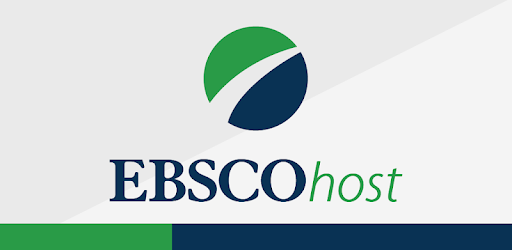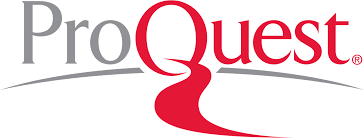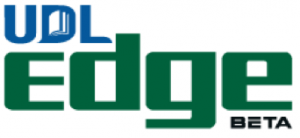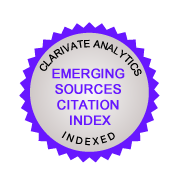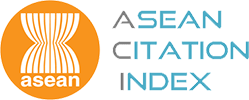MANDATORY LABELLING OF NANOFOODS AND THE WTO AGREEMENTS
Keywords:
nanofoods, labelling, TBT Agreement, SPS Agreement, barrier to tradeAbstract
The labelling of food products that contain new technologies have been carried out to ensure that consumers are well informed on the hazards and uncertainty of the technologies incorporated for food production. Although food labelling is important, the implementation of mandatory labelling measures for nanofood within the domestic legislation is only possible if it is aligned with the regulations of the World Trade Organisation (WTO). This study examines the mandatory labelling measure for nanofood that would be permissible under the WTO agreements, i.e. under the Technical Barriers to Trade Agreement and the Sanitary and Phytosanitary Agreement. This study adopted a doctrinal approach and content analysis that examine the relevant legal provisions in the WTO agreements, proceedings conducted by the WTO, and other documents on nanofood labelling. The findings suggest that the labelling measure amounts to unnecessary barriers to international trade. Moreover, mandatory labelling is not an international labelling standard, while the practice of mandatory labelling was found to be trade restrictive. Some recommendations were presented in this study that provide valuable insights on the implementation of mandatory labelling for nanofood if countries decide to introduce this measures into their food information system.
References
Adeyeye, S. A. O., & Fayemi, O. E. (2019). Nanotechnology and food processing: Between innovations and consumer safety. Journal of Culinary Science & Technology, 17(5), 435-452. https://doi.org/10.1080/15428052.2018.1476276
Ahmad Shafiee, Y., & Yeon, A. L. (2016). Trade-related environmental measures under the World Trade Organization (WTO) in Malaysia: The analysis of its’ application. Journal of International Studies (JIS), 12, 53-64.
Amenta, V., Aschberger, K., Arena, M., Bouwmeester, H., Botelho Moniz, F., Brandhoff, P., … Peters, R. J. (2015). Regulatory aspects of nanotechnology in the agri/feed/food sector in EU and non-EU countries. Regulatory Toxicology and Pharmacology, 73(1), 463–476. https://doi.org/10.1016/j.yrtph.2015.06.016
Buckingham, D. (2000). The labeling of GM foods: The link between Codex and the WTO. AgBioForum. 3(4), 209-212.
Capon, A., Gillespie, J., Rolfe, M., & Smith, W. (2015). Comparative analysis of the labelling of nanotechnologies across four stakeholder groups. Journal of Nanoparticle Research, 17(8), 327. https://doi.org/10.1007/s11051-015-3129-8
Chuah, A. S., Leong, A. D., Cummings, C. L., & Ho, S. S. (2018). Label it or ban it? Public perceptions of nanofood labels and propositions for banning nanofood applications. Journal of Nanoparticle Research, 20(2), 36. https://doi.org/10.1007/s11051-018-4126-5
Codex Alimentarius. (n.d.). International Food Standards, Biotechnology. Retrieved from http://www.fao.org/fao-who-codexalimentarius/thematic-areas/biotechnology/en/.
D’Silva, J., & Bowman, D. M. (2010). To label or not to label? It’s more than a nano-sized question. European Journal of Risk Regulation, 1(4), 420-427. https://doi.org/10.1017/s1867299x00000891
Dekkers, S., Prud ‘homme De Lodder, L. C. H., De Winter, R., Sips, A. J. A. M., & De Jong, W. H. (2007). Inventory of consumer products containing nanomaterials. RIVM letter report 340120001.
Drew, R., & Hagen, T. (2016). Potential Health Risks Associated with Nanotechnologies in Existing Food Additives. Food Standards Australia New Zealand, Melbourne, Australia.
European Parliament. (2014). Nanofoods: MEPs object to new labelling rules. Retrieved from http://www.europarl.europa.eu/news/en/headlines/society/20140313STO38801/defining-nano-food-a-big-problem-at-a-very-small-scale
Food and Drug Administration. (2007), Nanotechnology a report of the US Food and Drug Administration Nanotechnology Task Force, Rockville, Maryland. Author.
Fung, F., Wang, H. S., & Menon, S. (2018). Food safety in the 21st century. Biomedical Journal, 41(2), 88-95. https://doi.org/10.1016/j.bj.2018.03.003
Grieger, K. D., Hansen, S. F., Mortensen, N. P., Cates, S., & Kowalcyk, B. (2016). International implications of labeling foods containing engineered nanomaterials. Journal of food protection, 79(5), 830-842. https://doi.org/10.4315/0362-028x.jfp-15-335
Gruère, G. P. (2011). Labeling nano-enabled consumer products. Nano Today, 6(2), 117–121. https://doi.org/10.1016/j.nantod.2011.02.005
Hansen, S. F., Heggelund, L. R., Besora, P. R., Mackevica, A., Boldrin, A., & Baun, A. (2016). Nanoproducts–what is actually available to European consumers?. Environmental Science: Nano, 3(1), 169-180. https://doi.org/10.1039/c5en00182j
Hoseinnejad, M., Jafari, S. M., & Katouzian, I. (2017). Inorganic and metal nanoparticles and their antimicrobial activity in food packaging applications. Critical Reviews in Microbiology, Critical Reviews in Microbiology, 44(2), 161–181.https://doi.org/10.1080/1040841x.2017.1332001
International Standard Organisation. (2013). ISO/TS 13830:2013 Nanotechnologies — Guidance on voluntary labelling for consumer products containing manufactured nano-objects, Geneva, Switzerland: Author.
Jampilek, J., Kos, J., & Kralova, K. (2019). Potential of nanomaterial applications in dietary supplements and foods for special medical purposes. Nanomaterials, 9(2), 296. https://doi.org/10.3390/nano9020296
Joseph, T., & Morrison, M. (2006). Nanoforum report: Nanotechnology in agriculture and food. Retrieved from Nanoforum website: https://www.nanowerk.com/nanotechnology/reports/reportpdf/report61.pdf
Karlaganis, G., & Liechti, R. (2013). The regulatory framework for nanomaterials at a global level: SAICM and WTO Insights. Review of European, Comparative & International Environmental Law, 22(2), 163-173. https://doi.org/10.1111/reel.12031
Karlaganis, G., Liechti, R., Teparkum, S., Aungkavattana, P., & Indaraprasirt, R. (2019). Nanoregulation along the product life cycle in the EU, Switzerland, Thailand, the USA, and intergovernmental organisations, and its compatibility with WTO law. Toxicological & Environmental Chemistry, 101(7-8), 339–368. https://doi.org/10.1080/02772248.2019.1697878
Keane, S. (2006). Can a consumer’s right to know survive the WTO: The case of food labelling. Transnat’ l L. & Contemp. Probs., 16, 291.
Larsson, S., Jansson, M., & Boholm, Å. (2019). Expert stakeholders’ perception of nanotechnology: Risk, benefit, knowledge, and regulation. Journal of Nanoparticle Research, 21(3), 57. https://doi.org/10.1007/s11051-019-4498-1
Lakshmi, S. J., Roopa Bai, R. S., Sharanagouda, H., Ramachandra, C. T., Nadagouda, S., & Nidoni, U. (2018). Effect of biosynthesized zinc oxide nanoparticles coating on quality parameters of fig (Ficus carica L.) fruit. Journal of Pharmacognosy and Phytochemistry, 7(3), 10-14.
Li D. (2014). Labeling of Genetically Modified Organisms: Law, Science, Policy and Practice. (Doctoral dissertation) University of Alberta, Alberta, Canada.
Maksimović, M., Omanović-MikliÄanin, E., & Badnjević, A. (2019). Is Nanofood Safe?. In Nanofood and Internet of Nano Things (pp. 87-137). Springer, Cham. https://doi.org/10.1007/978-3-030-15054-9_3
Orden, D., & Roberts, D. (2007). Food regulation and trade under the WTO: Ten years in perspective. Agricultural Economics, 37, 103–118. https://doi.org/10.1111/j.1574-0862.2007.00238.x
Peters, R. J., Bouwmeester, H., Gottardo, S., Amenta, V., Arena, M., Brandhoff, P., ... & Rauscher, H. (2016). Nanomaterials for products and application in agriculture, feed and food. Trends in Food Science & Technology, 54, 155-164. https://doi.org/10.1016/j.tifs.2016.06.008
Rahmah Ismail. (2011). Food and consumer protection: A study on food legislation of selected countries (No. 017). ASLI Working Paper.
Ramkumar, C., Vishwanatha, A., & Saini, R. (2019). Regulatory aspects of nanotechnology for food industry. Nanotechnology Applications in Dairy Science: Packaging, Processing, and Preservation, 169. https://doi.org/10.1201/9780429425370-7
Ranjan, S., Dasgupta, N., Singh, S., & Gandhi, M. (2019). Toxicity and regulations of food nanomaterials. Environmental Chemistry Letters, 17(2), 929-944. https://doi.org/10.1007/s10311-018-00851-z
Ravichandran, R. (2010). Nanotechnology applications in food and food processing: innovative green approaches, opportunities and uncertainties for global market. International Journal of Green Nanotechnology: Physics and Chemistry, 1(2), P72-P96. https://doi.org/10.1080/19430871003684440
Reimhult, E. (2017). Nanoparticle risks and identification in a world where small things do not survive. Nanoethics, 11(3), 283-290. https://doi.org/10.1007/s11569-017-0305-6
Sharifi, S., Behzadi, S., Laurent, S., Forrest, M. L., Stroeve, P., & Mahmoudi, M. (2012). Toxicity of nanomaterials. Chemical Society Reviews, 41(6), 2323-2343. https://doi.org/10.1039/c1cs15188f
Snir, R. (2013). Governance by disclosure: Transnational convergence in the field of nanotechnology. Transnational Environmental Law, 2(1), 69-94. https://doi.org/10.1017/s2047102513000034
Sovalainen, K. & Pietroiusti. A. (2017). In B. Fadeel, (Eds.), Adverse effects of engineered nanomaterials: exposure, toxicology, and impact on human health (pp. 103-120). United Kingdom. Academic Press.
Tang, S., Wang, M., Germ, K. E., Du, H. M., Sun, W. J., Gao, W. M., & Mayer, G. D. (2015). Health implications of engineered nanoparticles in infants and children. World Journal of Pediatrics, 11(3), 197-206. https://doi.org/10.1007/s12519-015-0028-0
Thayer, J. D. (2005). The SPS Agreement: Can it regulate trade in nanotechnology?. Duke Law & Technology Review, 4(1), 1-16.
Thow, A. M., Jones, A., Hawkes, C., Ali, I., & Labonté, R. (2017). Nutrition labelling is a trade policy issue: Lessons from an analysis of specific trade concerns at the World Trade Organization. Health Promotion International, 33(4), 561-571. ttps://doi.org/10.1093/heapro/daw109
UNCTAD. (2003). Dispute Settlement: World Trade Organization, Technical Barrier to Trade. New York, United States. Author.
United Nation Trade Statistic. (2017). Harmonized Commodity Description and Coding Systems (HS). Retrieved from https://unstats.un.org/unsd/tradekb/Knowledgebase/50018/Harmonized-Commodity-Description-and-Coding-Systems-HS
World Health Organisation. (2015). Food safety: What you should know. Retrieved from http://www.searo.who.int/entity/world_health_day/2015/whd-what-you-should-know/en/
World Trade Organisation. (2014). The World Trade Organisation. Geneva, Switzerland. Author.
World Trade Organisation. (2018). WTO in Brief. Geneva, Switzerland. Author.
World Trade Organisation. (2019). Annual Report 2019. Geneva, Switzerland. Author.
World Trade Organisation. (n.d.). Sanitary and Phytosanitary Measures: Introduction Understanding the WTO Agreement on Sanitary and Phytosanitary Measures. Retrieved from https://www.wto.org/english/tratop_e/sps_e/spsund_e.htm











